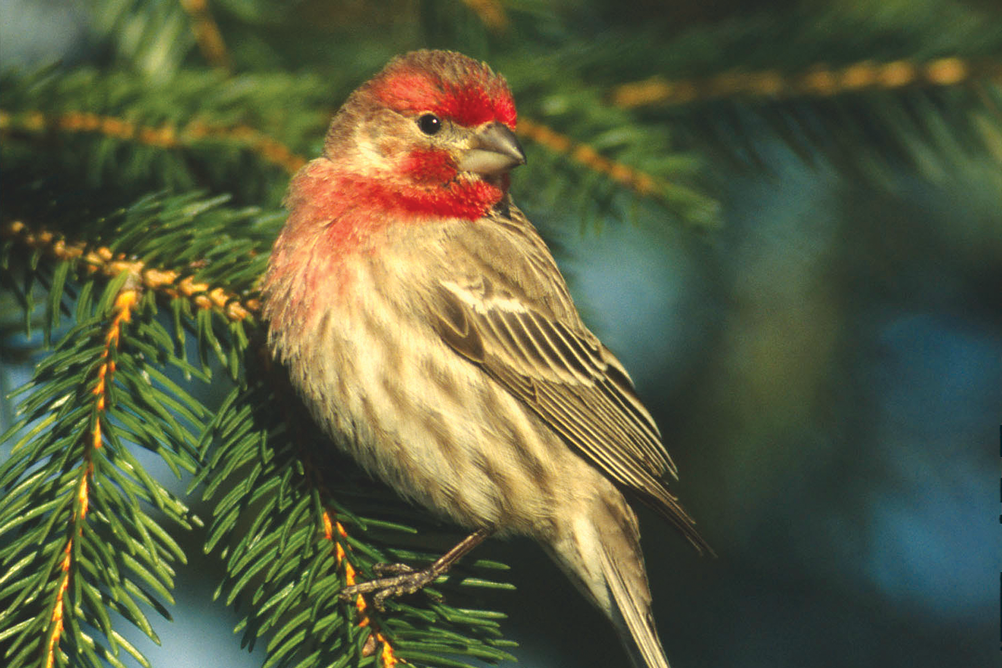The male’s red markings come from pigment in its food The House Finch

By Sister Jeanne Thurin, HM
Ohio Certified Volunteer Naturalist
The house finch (Carpodacus mexicanus) is a cheerful, relatively new resident of Ohio and eastern North America.
Originally found in western America and Mexico, it was introduced to Long Island, N.Y., from western America in the 1940s.
The population grew quickly. Scientists now guess the number to be between 267 million and 1.4 billion birds.
This small bird measures only 5-51/2 inches, with a fairly large, strong beak and a rather elongated, flat head.
Its short wings make its slightly notched tail look long by comparison.
You can find this bird year-round in Ohio. During the winter, the house finch stays in a large flock, but in early spring it begins to look for a mate and starts nesting.
The male house finch is identified by its bright red forehead, eyebrow, breast and rump. The rest of the body is pale brown with darker brown streaks.
The female is similarly light brown with streaks but no red head.
Juvenile house finches look like the female.
Interestingly, the red color of the male comes from red pigment in the food it eats, thus, the more red food pigment, the more red color. This is why some male house finches have orange or yellowish coloring.
The females, however, prefer the red-colored males when mating.
The song of the house finch has been described as a long, twittering song ending with a few buzzy notes or as a clear canary-like warble. The call sound varies from sparrowlike chirps to a rising kweet.
In terms of habitat, it is quite an adaptable bird, as it is found in cities and residential areas in the East, in open woods, in desert scrub and chaparral in the West, but it avoids deep woods.
In residential areas, house finch nests can be found high in deciduous or coniferous trees, on ledges, vents, street lamps, hanging baskets and even forgotten Christmas wreaths.
The small, cup-shaped nest is made of fine twigs, stems and roots.
The female lays four to five pale blue, lightly marked eggs in each of two breeding seasons per year.
The house finch flies down from its perch high in a tree, building or power line to feed on seeds, fruit and tree buds on the ground. It also will come to seed feeders.
Both male and female birds feed their young the same plant-based diet they, as adults, eat, which is unusual in the bird world, as most vegetarian birds will feed their young some protein.
At backyard feeders, the house finch prefers small, black oil sunflower seeds. If you plan on attracting this gregarious and social bird, stock up on large amounts of these sunflower seeds because the finches may come in flocks of 50 or more.
To learn more about this interesting bird, and control options when they become a nuisance, go to go.osu.edu/housefinch.
 43
43
